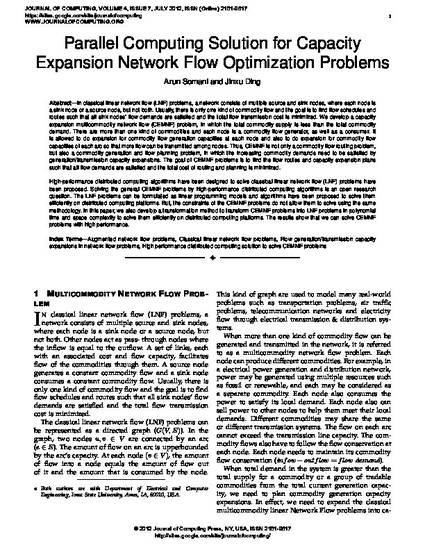
In classical linear network flow (LNF) problems, a network consists of multiple source and sink nodes, where each node is a sink node or a source node, but not both. Usually, there is only one kind of commodity flow and the goal is to find flow schedules and routes such that all sink nodes’ flow demands are satisfied and the total flow transmission cost is minimized. We develop a capacity expansion multicommodity network flow (CEMNF) problem, in which the total commodity supply is less than the total commodity demand. There are more than one kind of commodities and each node is a commodity flow generator, as well as a consumer. It is allowed to do expansion for commodity flow generation capacities at each node and also to do expansion for commodity flow capacities of each arc so that more flow can be transmitted among nodes. Thus, CEMNF is not only a commodity flow routing problem, but also a commodity generation and flow planning problem, in which the increasing commodity demands need to be satisfied by generation/transmission capacity expansions. The goal of CEMNF problems is to find the flow routes and capacity expansion plans such that all flow demands are satisfied and the total cost of routing and planning is minimized. High-performance distributed computing algorithms have been designed to solve classical linear network flow (LNF) problems have been proposed. Solving the general CEMNF problems by high-performance distributed computing algorithms is an open research question. The LNF problems can be formulated as linear programming models and algorithms have been proposed to solve them efficiently on distributed computing platforms. But, the constraints of the CEMNF problems do not allow them to solve using the same methodology. In this paper, we also develop a transformation method to transform CEMNF problems into LNF problems in polynomial time and space complexity to solve them efficiently on distributed computing platforms. The results show that we can solve CEMNF problems with high performance.
Available at: http://works.bepress.com/arun-somani/5/

This article is from Journal of Computing 4 (2012): 2151-9617. Posted with permission.